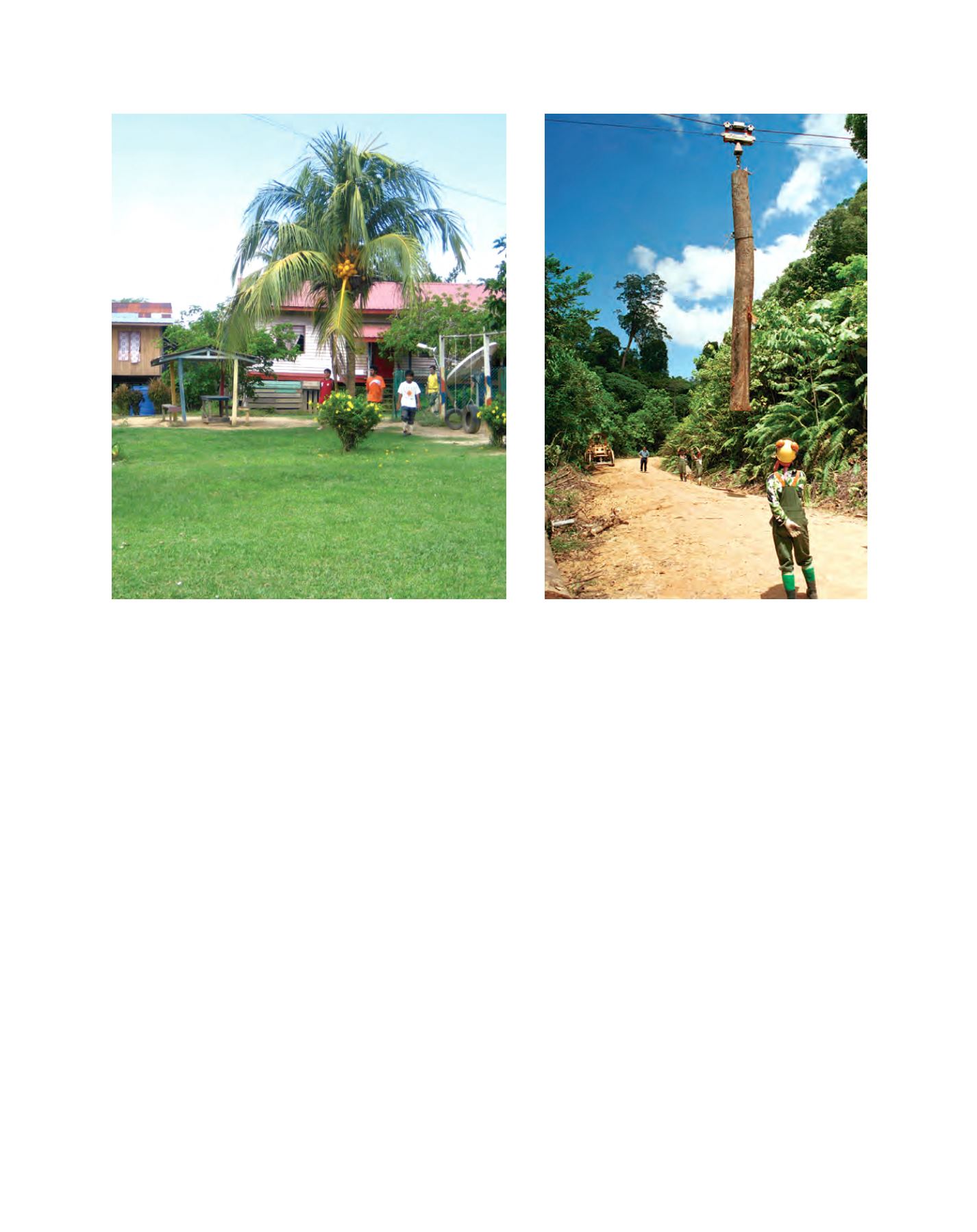

[
] 280
Local communities in and around Deramakot are an important
component of the reserve’s FMP. Five villages outside Deramakot’s
southern border – Balat, Tangkong, Kuamut, Desa Permai and
Tulang-Tulang – are home to 784 people who are part of 218
households. A majority come from the Orang Sungai (river
people) ethnic group, the others being the Kadazan, Murut and
Dusun. Of these, the Balat settlement enjoys clean and continu-
ous water supply from a gravity feed system that originates inside
the reserve. It also has a primary school and a library for children.
The village of Kuamut has a Government clinic, primary school
and library, while the Tangkong and Desa Permai villages have
primary schools. One of the main benefits of community forestry
in Deramakot is its capacity to integrate villagers into forest
management activities, such as for forest restoration. This helps
the Department to develop approaches that encourage the sustain-
able use of forest resources while improving standards of living.
The Deramakot Forest Reserve Social Forestry Committee, which
unites the Department and the five villages, serves as a forum for
villagers and Deramakot managers to talk about development and
social issues such as access to clean water, education, healthcare
and meaningful participation in the reserve’s success as a model for
the world. A new agroforestry initiative based on villagers’ interests
in non-timber forest products such as rattan, bamboo, medicinal
plants and fruit trees is available within the reserves, and further
research is ongoing to determine how local communities might
benefit from cultivating these species.
In addition to caring for indigenous people, Deramakot is also
a refuge for at least 75 mammal species, including globally threat-
ened wildlife such as the orangutan, the Borneo pygmy
elephant and clouded leopards. There are over 220
bird species and more than a hundred reptile, fish and
amphibian species in the region. The reserve continues
to draw the interest of researchers who want to discover
more about Deramakot’s iconic wildlife, offering manage-
ment solutions to the Department along the way. This is
especially crucial as the Department forges ahead with
efforts to extend the model to other reserves, some of
which are equally important hubs for biodiversity.
Under the leadership of its Director Datuk Sam
Mannan, the Department is working to expand the
Deramakot model to other parts of Sabah in order for
SFM to be truly accepted. In the Department’s publica-
tion
Forever Green: A Sustainable Future With Deramakot
,
Mannan perhaps best wraps up Sabah’s vision: “(SFM)
is not merely about introducing changes in techniques
of harvesting. It first requires a change in mindset that
sustainable forest management is the only way for the
forestry sector to remain productive in the long term.
The Deramakot model is revolutionary. The planning,
preparation and training needed are all substantial, from
field work to securing the compliance of logging compa-
nies. Now, we also gain knowledge in wildlife and it is
attractive for researchers from all over the world.”
Indeed, the Sabah Forestry Department has, through
Deramakot, shown the way for the region and the rest
of the world.
Social needs are supported in villages adjacent to Deramakot Forest Reserve
The use of skyline to reduce the impact of harvesting
Image: Peter Lagan
Image: Sabah Forestry Department
















